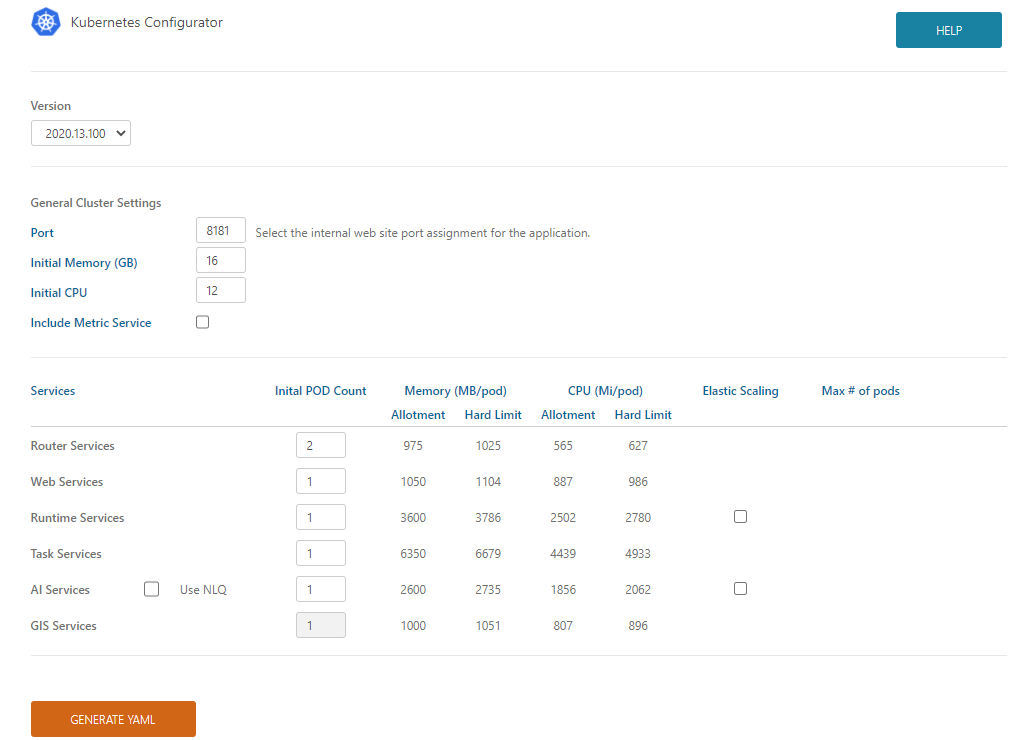The Kubernetes configurator tool found in the customer portal can be used to configure the "instructions" for your launch of a Pyramid cluster. This tool produces a "YAML" file with the instructions for how to find the right containers and how to deploy the services in a cluster.
Advanced users can generate their own YAML instructions to deploy Pyramid in other tools or a text editor.

Steps to use the Tool:
- Select the version of Pyramid to deploy.
- Choose the port assignment for the application. This is an internal port, that is usually accessible from inside the network only. Usually a reverse proxy service is placed on top of this to handle URL and SSL processing, pointing all requests to the site and this port. See here for more.
- Supply the initial memory and CPU values of your Kubernetes environment. These are used to size the memory and CPU footprints of the service pods. The tool will not accept less than 12 CPUs and 16GB of memory.
- Check the box to include the metric service. This is used by Kubernetes to trigger the elastic scaling logic. This can be left unchecked if you choose to deploy your own metric service framework and tools.
- Set for each service the number of pods you which to deploy initially. The cluster assumes a minimum of 1 for each service, with the Router having a minimum of 2.
- The GIS service has a maximum pod setting of only 1 that cannot be changed in this tool
- Check the "NLQ" option if you plan to enable Natural Language Querying - since this has a dramatic impact on memory allocations to the "AI" services.
- For each service, check if you would like elastic scaling. Currently the configuration tool only supports horizontal scaling. However, vertical scaling can be employed if preferred. For each service with scaling enabled, set the maximum number of pods the system can add when scaling out.
- Finally click the Generate button to build your YAML text file and download it from the site.